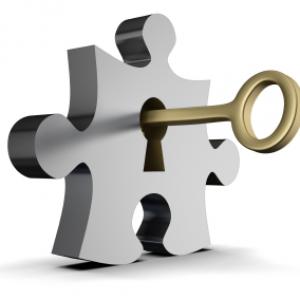The journey through adolescence is marked by numerous developmental changes, both physical and psychological. Among these changes, the maturation of the brain plays a pivotal role, particularly in decision-making processes. During the ages of 10 to 14, the brain undergoes significant changes as it begins the transformation from the childhood world into the adult world. A profound and intricate re-wiring of the brain to progress from the limited fear based learning in childhood, to the more complex decision making of adolescence and adult hood. During this time both the automatic and deliberate decision-making systems are impacted, leading to increased difficulty with daily and life directional decisions.
This can certainly be a surprise for parents, as their child that seemed to excelling in 3 and 4th grade begins to demonstrate increasingly more difficulty with decisions during 5th , 6th and 7th grades. From not knowing what to eat for lunch, to struggling with homework, this time of the brain development can appear to be a step back.
The brain at this time is beginning to re-wire to learn differently to begin to handle the future challenges of adulthood. This includes the beginning to move away from the family structure to explore other groups. At this time the brain is undergoing the beginning of synaptic pruning which is eliminating some of the brain connections created during childhood. As these connections are eliminated by the glial cells of the brain it will make the brain more efficient, to handle more complex problems in the future. However it can also be a bewildering time as the adolescent loses some of the orientation that helped them when they were younger.
While various brain regions involved in decision-making are in different stages of development, there are inherent limitations that can affect decision-making processes. Nuanced decision-making, emotional regulation, and comprehensive cognitive processing may present challenges for adolescents in this age group.
Challenges in Decision-Making:
- Nuanced Decision-Making: Adolescents aged 10 to 14 may struggle with making nuanced decisions due to the ongoing development of brain regions responsible for complex decision-making processes. This may result in difficulties in weighing options, considering long-term consequences, and understanding the perspectives of others.
- Emotional Regulation: The maturation of brain areas involved in emotional regulation, such as the prefrontal cortex, is still ongoing during this period. As a result, adolescents may experience heightened emotional responses and have difficulty managing their emotions effectively, which can influence decision-making outcomes.
- Comprehensive Cognitive Processing: The development of cognitive processes, including attention, memory, and executive functions, is still evolving in 10 to 14-year-olds. This can impact their ability to process information comprehensively, leading to challenges in evaluating complex situations and making well-informed decisions.
Parental and Mentor Guidance for Adolescents Through Decision-Making: Given the inherent limitations in decision-making during this developmental stage, adolescents benefit greatly from guidance and mentorship. Parents, educators, and other supportive figures play a crucial role in helping adolescents navigate the maze of decision-making. They can do this primarily through modeling the steps that promote the system of the brain to more effectively and efficiently meet ones needs. Two primary systems are involved in this process:
- Automatic System: The automatic system involves habitual and instinctive decision-making processes. Adolescents in this age group can develop improved patterns and habits through daily decision-making experiences. Guided by mentors, they can gradually refine their automatic decision-making processes to align with their values and goals. Using the QuickStep tool is helpful in completing everyday habitual decisions faster and more accurately.
- Deliberate System: The deliberate system encompasses conscious and intentional decision-making. This system is engaged when a need is no longer being met by the prior approach. Adolescents require guidance in learning new and improved ways of doing things, especially in areas that are unfamiliar or challenging. Mentors can provide support in teaching adolescents how to approach new subjects, solve problems, and make deliberate choices. The best way is model the DIY Deliberate Decision Making and help this age category to make the decisions together.
For individuals aged 10 to 14, decision-making plays a crucial role in helping them accomplish goals across various life roles. These roles typically include:
- Student:
- Academic Performance: Deciding how to allocate time for studying, completing homework, and preparing for exams.
- School Project
- When I’m choosing a book to read for a school project, help me to find summaries and reviews that are easy to understand, so that I can pick a book that captures my interest and relates to my assignment.
- Researching A Project
- When I’m choosing which topic to research for a school presentation, help me to access educational videos or simplified articles, so that I can grasp complex subjects and present them confidently.
- Group Project
- When I’m tasked with completing a group project, help me to organize and schedule team meetings using an app or tool, so that I can collaborate effectively with my peers and achieve success together.
- School Project
- Extracurricular Activities: Choosing which clubs, sports, or arts to participate in based on interests and time management.
- Extracurricular Activities
- When I’m deciding which extracurricular activity to join, help me to attend trial sessions or workshops for different clubs, so that I can discover my interests and make a choice that excites me.
- Extracurricular Activities
- Academic Performance: Deciding how to allocate time for studying, completing homework, and preparing for exams.
- Friend:
- Social Relationships: Deciding whom to befriend, how to resolve conflicts, and how to support friends.
- Friendship Conflict
- When I’m managing conflicts with friends, help me to learn communication strategies or role-playing exercises, so that I can resolve disagreements positively and maintain healthy relationships.
- Friendship Conflict
- Peer Pressure: Making choices about behavior and actions when faced with peer influence.
- Social Relationships: Deciding whom to befriend, how to resolve conflicts, and how to support friends.
- Family Member:
- Responsibilities at Home: Choosing how to manage chores and other family responsibilities.
- Family Interactions: Deciding how to communicate effectively with family members and contribute to family decisions.
- Team Member (Sports or Clubs):
- Team Participation: Deciding how to balance team practices, games, and meetings with other commitments.
- Team Roles: Choosing how to contribute to the team, whether as a leader, a supportive member, or in specific roles.
- Self-Manager:
- Personal Health and Well-being: Deciding on healthy eating, exercise, and sleep habits.
- Food Nutrition
- When I’m deciding what healthy snacks to choose during lunchtime, help me to access nutritional information and tips, so that I can make smart food choices that keep me energized throughout the day.
- Food Nutrition
- Personal Development: Choosing hobbies, interests, and activities that contribute to personal growth and self-improvement.
- Exploration
- When I’m exploring new hobbies or interests, help me to find beginner-friendly tutorials or workshops, so that I can learn new skills and develop my passions
- Time Management
- When I’m trying to manage my time between homework and hobbies, help me to create a visual schedule or planner, so that I can balance my responsibilities and still have time for activities I enjoy.
- Screen Time Management
- When I’m deciding how to spend my screen time, help me to discover educational apps or games, so that I can have fun while also learning and expanding my knowledge.
- Exploration
- Personal Health and Well-being: Deciding on healthy eating, exercise, and sleep habits.
- Consumer:
- Financial Decisions: Deciding how to spend allowance or earnings, saving money, and making purchasing choices.
- Money Management
- When I’m considering different ways to save money from my allowance, help me to learn about budgeting through interactive games or activities, so that I can understand the value of saving and spending wisely.
- Money Management
- Technology Use: Choosing how to use digital devices and social media responsibly.
- Financial Decisions: Deciding how to spend allowance or earnings, saving money, and making purchasing choices.
- Community Member:
- Civic Engagement: Deciding how to get involved in community service or local events.
- Environmental Responsibility: Making choices that reflect care for the environment, such as recycling or conserving resources.
- Problem Solver:
- Critical Thinking: Applying decision-making skills to solve everyday problems and challenges.
- Goal Setting: Deciding on short-term and long-term goals and the steps needed to achieve them.
Each of these roles requires decision-making skills that help pre-teens and early teens navigate their growing responsibilities and interactions within different contexts, contributing to their overall development and achievement of personal and communal goals.
Build a Strong Future and Strengthen Your Decision Making by Accepting the FREE DDM Family Membership Today!

